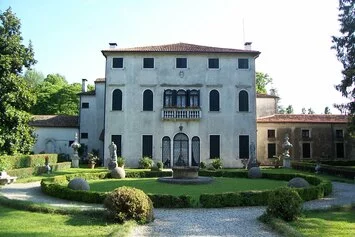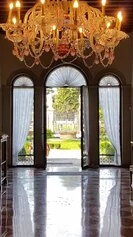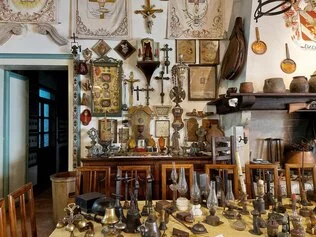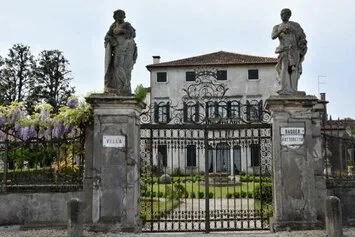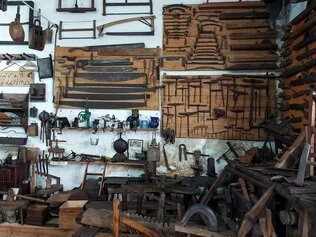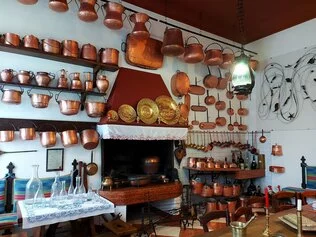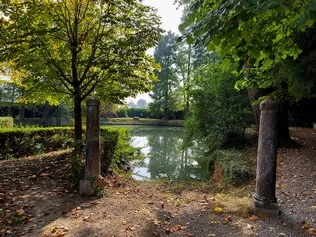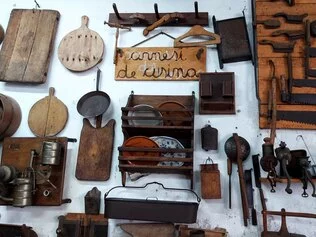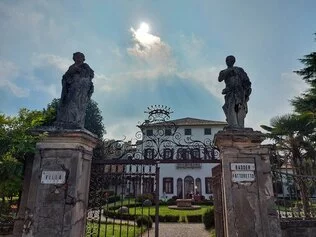Villa Badoer Fattoretto is a Venetian villa consisting of a 16th-century central body and two side barchesse from the second half of the 18th century, which were remodeled in the 19th century. The complex is set in a centuries-old park of more than 20,000 square meters furnished with period statues and marbles.
The villa's historical setting is in the first half of the 18th century; in fact, it is depicted in a famous engraving by Costa in 1750 and has a celebratory style while maintaining a generally simple and clean composition overall. Despite the villa's 18th-century origins, already in the "denuncia dei redditi" (called "condizione" at the time) dated 1518, Giacomo Badoer declared that he was the owner "in isola di Sambruson sopra la Brenta vecchia drio la fornasa: (di una) casa brusada con cortivo e brolo di campi uno e mezzo sopra i quali mai pagà daie," in essence already owning a building and the surrounding land, while a "casa dominicale con barchesse" is first mentioned in Bernardo Badoer's complaint of 1711 which also included the farmer's and gardener's house, that is the present villa with its appurtenances.
It was for a long time the summer residence of the Badoer family, but in 1846 the last Badoer heirs sold it, and in the following decades it changed hands again and again. In 1903 it was purchased by Baron Charles de Chantal, who is said to have bought the villa so that he could date his mistress who lived in the opposite house.
The janitor of the Villa at the time, recounted that Baron de Chantal was sure that the villa had been a convent, and based on the belief and the fact that the area had been the scene of continuous wars, he got the idea that the friars might have hidden treasure in the park. Therefore he imposed deep excavation in a certain place in the garden; what remains of this search is a beautiful pond with islet inside the park.
During World War I it was used as a military hospital: the Sambruson parsonage has a register in which the names of 46 soldiers who died in 1918 are recorded; this use entailed the massive use of quicklime as a disinfectant, which contributed to the irreparable destruction of the house's frescoes.
During the last World War the villa was requisitioned and turned into a German military hospital and then by the British commando into a warehouse-storage facility, suffering imaginable deterioration.
In 1945 the Villa was purchased by the Fattoretto family because in its adjacencies they had glimpsed a natural home for their work as wine producers and merchants, as well as because of the Villa's proximity to the Brenta River, which was for many years the natural route for transporting wine by boat to the city of Venice.
And, walking along the Naviglio, on the right bank, it is possible to admire this villa, still equipped with river access, as a mention of the fundamental historical-economic importance of the waterway for the Riviera areas.
Thanks to the above-mentioned eighteenth-century print by Costa entitled "View of the N.H. Badoer Palace," it is possible to compare the "historic" exterior appearance of the villa with the present one, noting how, despite the fact that the original architectural structure has been partly modified, the solemnity of this elegant dwelling and the characteristic atmosphere of villa living that marked the Venetian decadent period remain intact. In fact, it is evident how the central body with a square plan has remained unchanged, which was originally flanked by two long symmetrical barchesse ending with as many small buildings crowned by a triangular pediment; today, however, this form has been partly modified due to the numerous subsequent building remodels, which have somewhat architecturally impoverished the complex due also to the elimination of the characteristic adjacencies.
It turns out to be very pleasant the external environment that welcomes the villa and its appurtenances: the side that overlooks the Naviglio offers visitors the possibility of walking along a charming path that ends with a wrought-iron gate and beautiful statues, while on the other side it is possible to get lost in the villa's vast park and admire its small but lovely pond.
From 1964 to 1971 the villa underwent a major series of restoration works and today it is in an excellent state of preservation. Inside the barchesse is an interesting ethnographic museum, "the villan's museum," which displays more than 22,000 objects, in which are collected historical documents, musical instruments, the first rudimentary agricultural machines, and tools related to the "villan's life," and many other curiosities related to the history of the villa and the daily life that has marked it over the centuries.
The villa is still owned and inhabited by the Fattoretto family.
